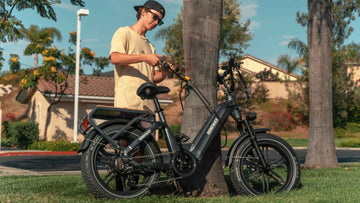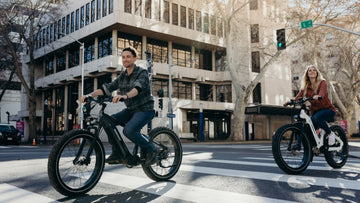Gone are the days when you had to give yourself a pep-talk as you rode your bike up the hill so that you could prepare yourself for the challenge. Now you can easily cruise hills with minimal effort thanks to electric bikes.
Whether you’re a seasoned e-bike lover or are new to the world of electric pedal bikes, this article will give you great insights into your long-range electric bike.
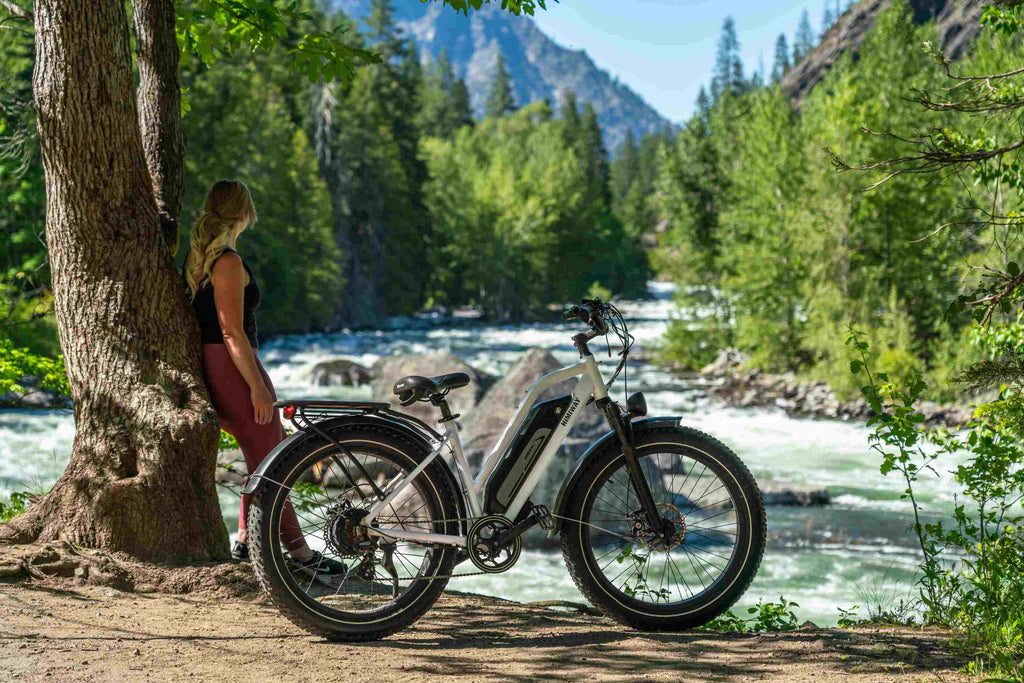
Powering Your Electric Bike
Here’s what you need to know about the different parts of your e-bike.
Electric Motor
The electric motor acts as the heart of your e-bike. It powers your bike and helps you move faster without using a lot of effort. The motor works by boosting the effort you apply when pedaling. This allows you to ride longer distances without feeling tired. With an all-terrain fat-tire electric bike, the motor can even help you conquer steep hills.
Battery
The battery stores and supplies electrical energy to your e-bike’s motor. This energy is what helps propel you forward.
If you’re planning to bike for a long distance, remember to charge your battery to full capacity. Once your battery is full, you can cover more ground without worrying about running out of power.
Controller
The controller acts like the brain of your electric bicycle. It regulates and controls the flow of electricity from the battery to your bike’s motor.
To customize your riding experience, feel free to adjust the speed limit and power assistance level settings on your controller.
Additionally, before riding your electric pedal bike on a busy road, practice switching between the different power modes on a less crowded route. This will help you familiarize yourself with your controller’s functions.
Sensing Systems
For safety purposes, the US federal law states that the maximum speed of a bicycle must not exceed 15.5mph, equivalent to 25km per hour.
That’s why long-range electric bikes have sensing systems that adhere to these requirements. The three main types of sensors in electric bicycles are:
1. Speed Sensor: This sensor measures your speed.
2. Torque Sensor: This measures the force and pressure you apply to the pedals, then adjusts the assistance level to give you a smooth riding experience.
3. Pedal Assist Sensor: This sensor detects your pedal movement and then sends a signal to your controller, informing it about the power assistance you need. This ensures that the motor starts when you pedal and turns off when you stop pedaling.This sensing system works together to make your riding experience seamless and safe.
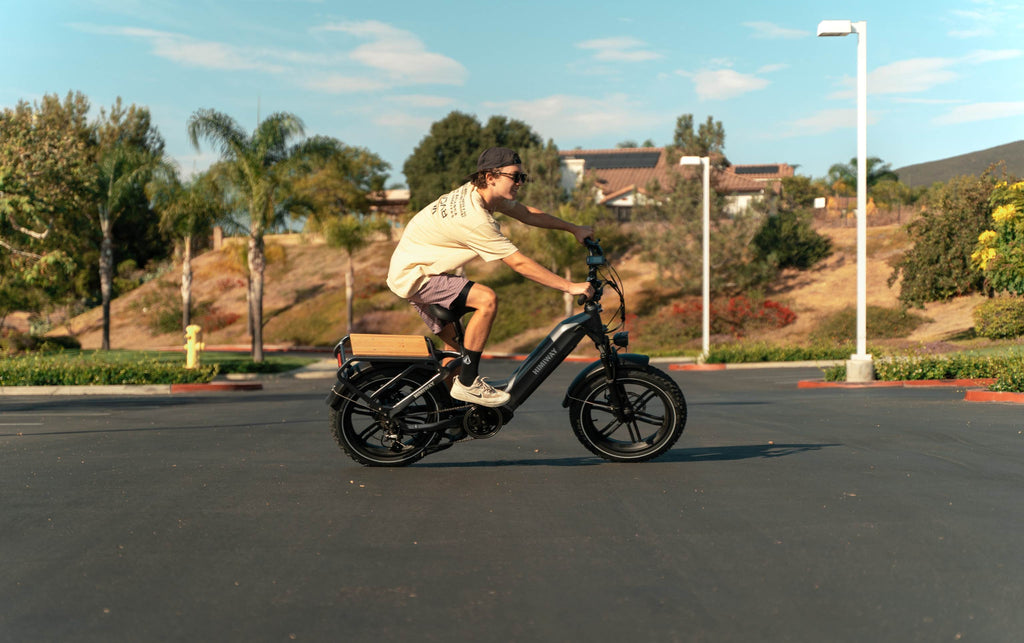
Range Monitoring and Management
As an e-bike lover, knowing how to monitor the range of your battery powered bike can help you avoid surprises, especially during long bike rides.
How Do Battery Range Indicators and Displays Function on Your Electric Bike?
Battery range indicators and displays on your e-bike help you track your battery’s remaining power. The indicator will most likely be on a screen attached to the handlebar.
The screen will have a battery icon similar to a car’s fuel gauge, where the indicator will show your battery’s current charge level and energy consumption data. Some e-bikes have displays with extra features like speed tracking, distance traveled, and power-assist levels.
How To Estimate the Remaining Range of Your Battery
To estimate this, start by determining the capacity of your battery, which is measured in watt-hours. Then divide your current battery capacity by your bike’s average power consumption.
Here’s the formula: Remaining Range = Battery Capacity / Power Consumption. Although this method is effective, the terrain and weather conditions can also affect your remaining range.
If you love biking for long distances, consider investing in quality e-bikes like Himiway Big Dog that can last up to 7 hours on a full charge. It also has a powerful gear motor of 250W, and the best part is it has a full rear rack where you can easily carry heavy cargo.
How Long-Range Electric Bikes Use Advanced Battery Technology
In the next section, we’ll discuss the battery technology that makes e-bikes fast and efficient.
Lithium-Ion Batteries
Previously, e-bikes used sealed lead acid batteries which were soon replaced by Lithium-ion batteries. These batteries are the best choice for electric bicycles because of the following reasons:
1. High Energy Density: With a Lithium-ion battery, you can ride longer without needing to charge your bike frequently.
2. Lightweight: Lithium-ion batteries are light, and e-bikes with these batteries are easier to ride.
3. Fast Charging: These batteries charge very fast, so you can quickly top up your battery percentage.
4. Long Lifespan: With proper care, your lithium-ion battery can last for many years.
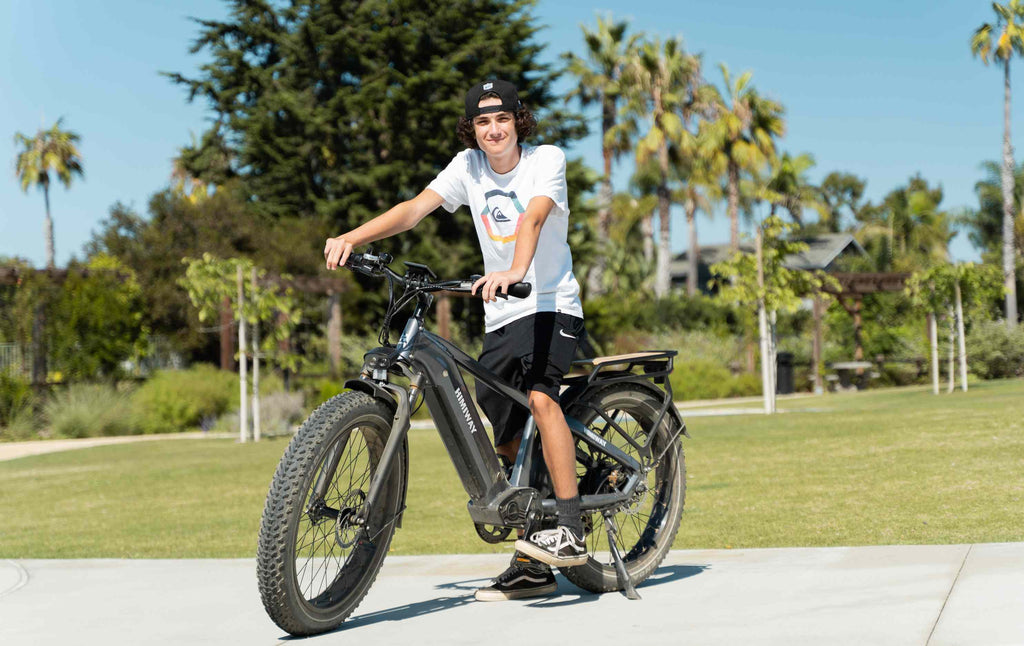
Battery Management Systems (BMS)
A BMS is a system that maintains the efficiency of your e-bike’s battery. These systems monitor and control your battery’s current, voltage, and temperature. The BMS also prevents your battery from overcharging and overheating. This protects the battery from damage and ensures it lasts for several years.
Regenerative Braking
Regenerative braking is a cool feature in most electric pedal bikes. Instead of only slowing down when you use the brakes, the energy from the braking process is converted into electrical energy and stored in your bike’s battery.
This stored energy can extend your battery range or give your motor extra power. It also helps reduce the wear and tear on your regular electric bike brakes.
FAQ
Here are some frequently asked questions about long-range electric bikes.
1. Is It Safe To Ride My E-Bike in the Rain?
Most e-bikes are water-proof to some extent, protecting the bike from light rain and water. However, continuous exposure to heavy rain and a lot of water could damage your bike. To avoid this, check the weather report before going for long rides.
2. Do I Need a License for an Electric Bicycle?
Luckily, you don’t need any special registration, license, or insurance before buying an e-bike. Remember to prioritize your safety by wearing reflective gear and a helmet, whether you’re on a busy road or a less-crowded one.
Conclusion
Understanding how your e-bike works will help you maximize your bike’s potential and use features that will give you an amazing riding experience. If you don't want bad weather or different terrain to interfere with your ride, Himiway has great fat tire electric bikes that are perfect for riding in snow, mud, and even sand. Shop today and enjoy all the benefits of owning a fat tire e-bike. Happy riding!

























